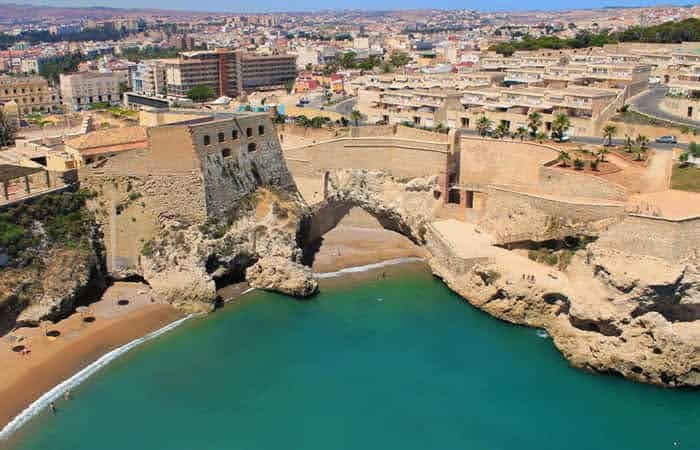Adú Filming Locations
Adú Filming Locations
Benin, a French-speaking West African nation, is a birthplace of the vodun (or “voodoo”) religion and home to the former Dahomey Kingdom from circa 1600–1900. In Abomey, Dahomey's former capital, the Historical Museum occupies two royal palaces with bas-reliefs recounting the kingdom’s past and a throne mounted on human skulls. To the north, Pendjari National Park offers safaris with elephants, hippos and lions.
Rusadir was an ancient Punic and Roman town at what is now Melilla, Spain, in northwest Africa. Under the Roman Empire, it was a colony in the province of Mauretania Tingitana.
Morocco, a North African country bordering the Atlantic Ocean and Mediterranean Sea, is distinguished by its Berber, Arabian and European cultural influences. Marrakesh’s medina, a mazelike medieval quarter, offers entertainment in its Djemaa el-Fna square and souks (marketplaces) selling ceramics, jewelry and metal lanterns. The capital Rabat’s Kasbah of the Udayas is a 12th-century royal fort overlooking the water.
Spain, a country on Europe’s Iberian Peninsula, includes 17 autonomous regions with diverse geography and cultures. Capital city Madrid is home to the Royal Palace and Prado museum, housing works by European masters. Segovia has a medieval castle (the Alcázar) and an intact Roman aqueduct. Catalonia’s capital, Barcelona, is defined by Antoni Gaudí’s whimsical modernist landmarks like the Sagrada Família church.
Cartagena is a port city and naval base in the Murcia region of southeast Spain. Founded by the Carthaginians around 220 B.C., the city boomed during the Roman period. Among its many Roman ruins are a 1st-century B.C. theater and Casa de la Fortuna, a villa with murals and mosaics. The Muralla Púnica (Punic Wall) interpretation center houses the remains of a 3rd-century B.C. defensive wall.
Murcia is a university city in southeastern Spain and the capital of a region also named Murcia. Plaza Cardenal Belluga is the city’s architectural showpiece, where the ornate cathedral, with its mash-up of styles from Gothic to baroque, and the colorful 18th-century Palacio Episcopal stand in striking contrast to the modern 1990s Ayuntamiento (city hall) annex by architect Rafael Moneo.
Murcia is a university city in southeastern Spain and the capital of a region also named Murcia. Plaza Cardenal Belluga is the city’s architectural showpiece, where the ornate cathedral, with its mash-up of styles from Gothic to baroque, and the colorful 18th-century Palacio Episcopal stand in striking contrast to the modern 1990s Ayuntamiento (city hall) annex by architect Rafael Moneo.
Águilas is a municipality and seaport of southeastern Spain, in the province of Murcia. It is situated at the southern end of Murcia's Mediterranean coastline, otherwise known as the Costa Cálida, near the border with the Province of Almería.
Lorca is a municipality and city in the autonomous community of the Region of Murcia in south-eastern Spain, 58 kilometres southwest of the city of Murcia. The municipality had a population of 95,515 in 2020, up from the 2001 census total of 77,477.
Adú (2020)
Three people, three stories, one thing in common: Africa.

